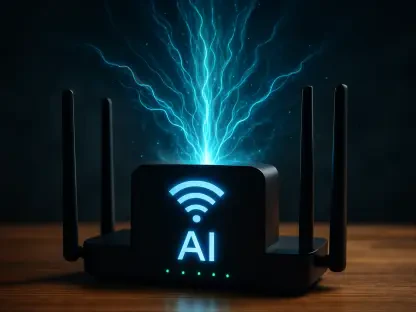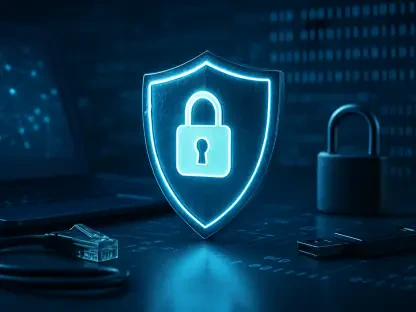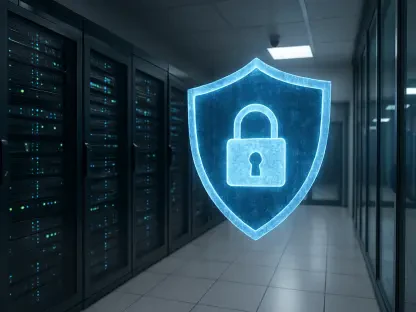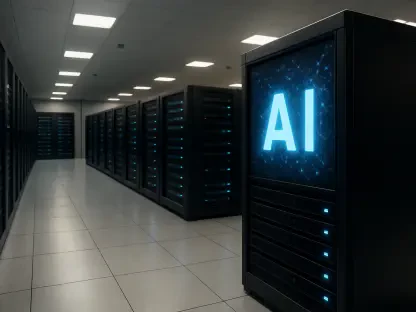Matilda Bailey, a renowned networking specialist, brings her expertise to the forefront in an engaging discussion about how nonprofits can bridge the gap in cybersecurity. Her work emphasizes the importance of adapting cellular, wireless, and next-gen solutions to meet the unique needs of mission-driven organizations.
Can you explain the significance of Sightline Security’s mission in supporting nonprofits and how it differentiates from typical approaches to cybersecurity?
Sightline Security is unique because it truly understands that nonprofits, while mission-first, are deeply invested in cybersecurity. Unlike the standard enterprise approach, they recognize the distinct challenges nonprofits face and provide tailored solutions, ensuring that critical services remain protected without ignoring the unique operational languages and needs of these organizations.
What inspired you to conduct research on cybersecurity for nonprofits and ultimately found Sightline Security?
I began this journey through my dissertation, which revealed a pressing need for better cybersecurity resources for nonprofits. Fueled by personal experiences with digital threats and the encouragement of mentors, I felt compelled to create a hub that nonprofits could turn to — not just for advice, but for actionable steps regarding cybersecurity threats.
How did the feedback from nonprofits during your research shape the structure and objectives of Sightline Security?
The feedback was essential. Nonprofits highlighted that conventional security firms often misunderstood their operations and pain points. This input guided our decision to form Sightline as a nonprofit. It helped us embed the notion that we’re allies, swimming through the same challenges alongside them, crafting solutions that align with their missions and constraints.
Why did you choose to establish Sightline Security as a nonprofit rather than a for-profit organization?
Becoming a nonprofit was intentional. It was about aligning with the community we wanted to serve, sharing their values, and gaining their trust. Nonprofits are wary of outsider companies that don’t understand their world, so we decided to mirror them, ensuring that our interests and theirs were inherently linked.
Could you share more about your personal experiences with cyber threats and how they influenced your approach to nonprofit cybersecurity?
My personal journey with cyberstalking exposed me to the vulnerabilities individuals and organizations face. It was eye-opening to see how unprepared some nonprofits were to tackle digital threats. These experiences were the collision point of my work, propelling me toward creating Sightline to transform vulnerability into empowerment.
What are the primary goals of the Sightline Partners Program, and how can solution providers contribute to closing security gaps for nonprofits?
The Sightline Partners Program aims to connect tech solution providers with nonprofits to directly address their unique security challenges. These partnerships offer a chance to not only provide solutions but also understand the operational nuances of nonprofits. It’s about collaborating over typical vendor-purchase relationships to ensure sustainable cybersecurity practices.
How does Sightline Security’s KickStart program assist nonprofits in initiating their cybersecurity practices?
KickStart serves as a foundational program that introduces nonprofits to cybersecurity without overwhelming them. By evaluating their current stance and providing immediate, actionable insights, we help nonprofits integrate security into their operations naturally, emphasizing mission alignment every step of the way.
What insights can we expect from the upcoming Insight Report, and why is it important for the future of nonprofits’ cybersecurity?
The Insight Report compiles years of data reflecting the real cybersecurity needs and experiences of nonprofits. It’s essential as it highlights trends and offers a roadmap tailored to nonprofit operations, ensuring the sector isn’t left behind in cybersecurity advancements.
What qualities do you look for in solution partners, and how do these partnerships benefit nonprofits?
We seek partners who show commitment to understanding nonprofit operations and speak their language. Such partnerships enrich nonprofits by providing resources and expertise tailored to their specific needs, making cybersecurity manageable and aligned with their missions, rather than an additional burden.
As an individual interested in contributing to Sightline Security’s mission, what actions can I take to support your work?
Engagement can take many forms: from joining our Partners Program to sponsoring initiatives like the KickStart. Even spreading the word about our mission or lending your expertise can make a significant difference in bolstering nonprofit defenses against cyber threats.
How should businesses and individuals approach supporting nonprofits with cybersecurity in a way that respects their missions?
Approach with humility and curiosity. It’s crucial to listen first, understanding nonprofits’ missions before suggesting improvements. It’s about enhancing their work where they see fit, not imposing changes that don’t align with their goals. Support must be respectful, aimed at strengthening the missions they fiercely protect.
Can you provide examples of how organizations can effectively integrate cybersecurity without overwhelming their existing operations?
Integration works best when cybersecurity is interwoven with everyday processes, not added as an afterthought. Identifying mission-critical areas and addressing them in phases allows nonprofits to adapt without feeling pressured, ensuring cybersecurity enhances rather than disrupts their workflow.
What misconceptions do people often have about nonprofits in relation to cybersecurity, and how can these be addressed?
Many believe nonprofits don’t care about or can’t afford cybersecurity. In reality, they are deeply invested, but resource-constrained. By educating stakeholders about the nuanced operations and priorities within nonprofits, these myths can be dispelled, encouraging support that’s informed and empathetic.
How does Sightline Security tailor its approach to meet the diverse cybersecurity challenges faced by nonprofits based on their specific missions and sizes?
We customize our strategy to align with each nonprofit’s mission and resources, focusing on relevant risk areas and practical steps they can implement immediately. Our approach isn’t one-size-fits-all; it’s about meeting each organization where they are and respecting their unique journey toward cybersecurity readiness.
In what ways can nonprofits prioritize their cybersecurity needs amidst competing priorities?
Nonprofits can prioritize by first assessing which vulnerabilities most threaten their mission. Cybersecurity should not be seen as secondary but as integral to their ability to operate and fulfill their mission, helping them determine where best to allocate their limited resources for the greatest impact.
How should nonprofits decide which technological advances or trends to adopt, like AI, while staying true to their mission?
Nonprofits must align any tech adoption, like AI, with their core mission. Staying focused on what truly elevates their mission ensures resources are spent wisely and sustainably. Continuous learning and strategic partnerships can also help navigate these decisions effectively.
What are the initial steps a nonprofit leadership should take if they’re concerned about their cybersecurity, and how can they get involved with Sightline Security?
Leadership should start with a cybersecurity assessment to identify current vulnerabilities related to their mission. Joining programs like Sightline’s KickStart can then provide tailored steps to improve their security posture. Reaching out is crucial – we’re ready to guide them through the process thoughtfully and strategically.
Why should the media focus more on cybersecurity risks facing nonprofits, and what type of reporting would ideally benefit these organizations?
Media should highlight the critical impact cyber threats have on nonprofit operations, as attacks can jeopardize life-saving missions. Rather than sensationalist stories, continuous coverage rooted in real experiences and challenges can raise awareness and drive support from the public and private sectors alike.
How can major tech companies leverage their resources to better support nonprofit cybersecurity efforts?
These companies can move beyond financial donations, offering in-depth risk assessments and becoming knowledge partners to empower nonprofits. Engaging with nonprofits to understand their specific cybersecurity needs ensures resources are effectively utilized, fostering a supportive ecosystem rather than a transactional relationship.
What arguments would you present to commercial organizations that underestimate the financial capability of nonprofits to invest in cybersecurity?
Nonprofits are astute in allocating funds where they most impact their mission. If a solution genuinely supports and strengthens their mission, they will invest in it. It’s about demonstrating value and building trust — nonprofits can and will spend wisely when the benefits are clear.
Are there current fundraising efforts at Sightline, and how can individuals or companies contribute?
We’re actively seeking sponsors for our KickStart program and upcoming Insight Report. Contributors can provide financial support, collaborate on strategic initiatives, or volunteer expertise, ensuring nonprofits become resilient in the face of cyber threats.
What challenges have you faced in fundraising for Sightline, and what advice do you have for others looking to start a nonprofit focused on cybersecurity?
Fundraising has been a challenge due to common misconceptions about nonprofits’ cybersecurity needs. My advice to others is to couple a clear vision with resilience. Accept that it’s a long journey that requires educating potential supporters about the unique role cybersecurity plays in safeguarding nonprofit missions.









